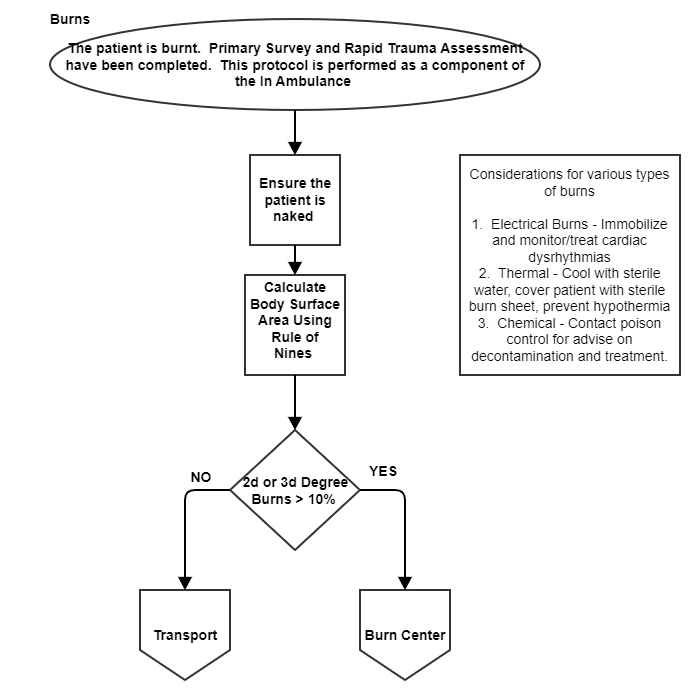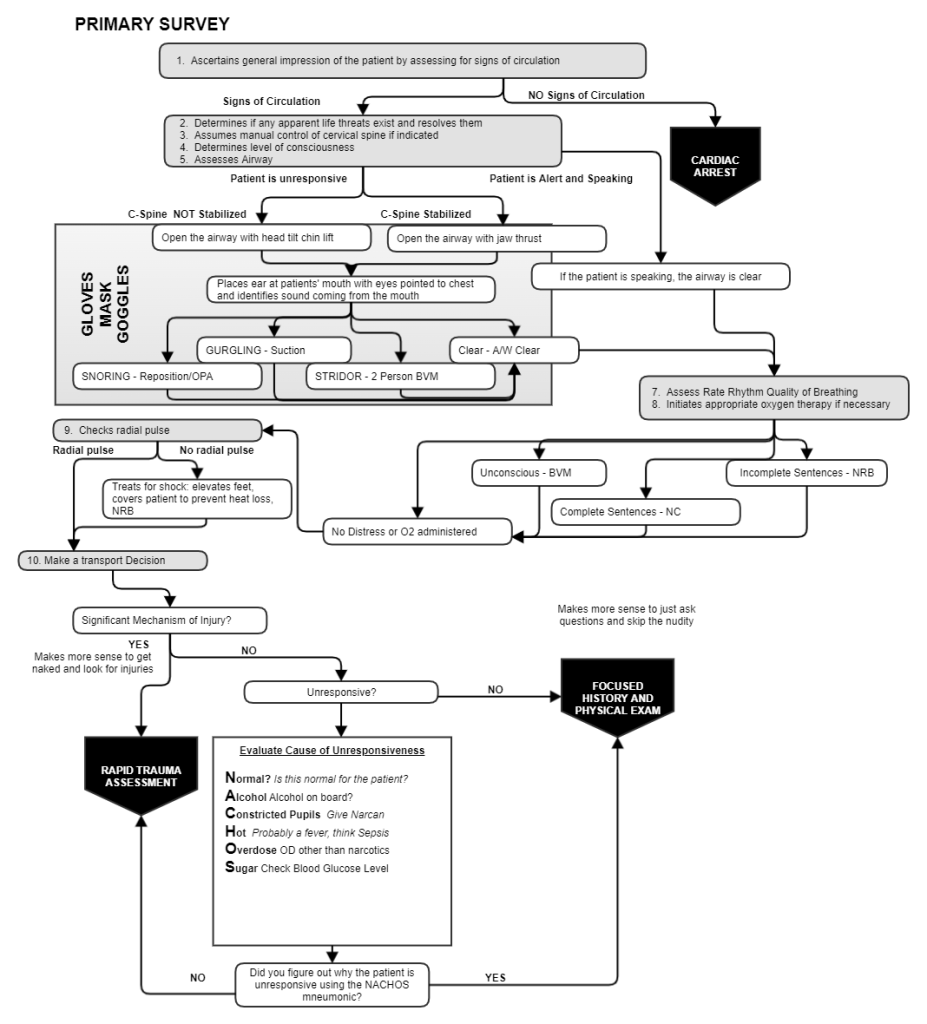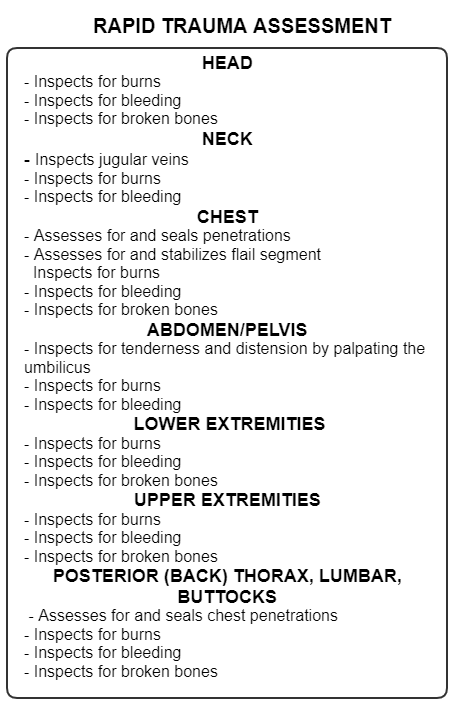Assessment & Management of Burns
Published .

The Scene Size Up
Determining the mechanism of injury early on will lead the medics to consider the possibility that the patient will need transport to a burn center. Even as the medics are enroute to the call, they could make arrangements to transport the patient to the correct facility. If there is no burn center within a reasonable distance, the medics could request medical air transport to the scene. Getting these resources enroute early is key in the successful management of the burn patient.
The Primary Survey

Initial management of the patient is guided by the primary survey. The primary survey may reveal the patient is conscious and has no respiratory distress, but later begin to decompensate. Where there is fire, there is smoke, which the patient no doubt inhaled. The medics should look for soot around the nose or singed nose hairs. These important clues can prepare the medics for the deterioration of the patient’s condition that is yet to come, or at least assume the worst from a patient who may not have any real complaints.
The Rapid Trauma Assessment

During the rapid trauma assessment the medics should look for burns. The medics must extinguish any actual burning, expose the burns, and loosely cover with a sterile burn sheet. Paramedics would be useful to initiate fluid therapy and administer analgesics. Being able to estimate the body surface area that has been burnt then communicate the finding to the hospital will result in the patient going to the correct facility. The patient may benefit from medical air transport.
